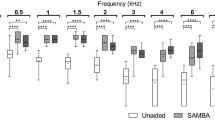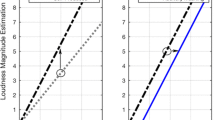Abstract
This paper proposes and evaluates an intramouth vibrating voice-generation system we have developed to aid alaryngeal speech. The system fixes a vibrator in artificial teeth as a substitute for a glottal sound source, and proper sound control improves the speech. With this system, we controlled the substitute glottal sound with intraoral pressure, which increases for voiceless consonants, for clearer speech. In addition, the system controls the pitch of speech using pressure from a finger. This concise pitch control is available to all patients for more natural speech. We tested two methods of pitch control by finger pressure: one in which finger pressure directly determines the pitch, and the other in which finger pressure is converted into binary commands of voice and accent that execute pitch pattern generation. Conventional pitch control with expiration pressure served as a reference. Without voicing control, less than 50% of syllables were identified correctly. Voicing control improved this rate to 60%. Similarly, voicing control improved misidentification of voiceless consonants to corre-sponding voiced ones from 30% to 10%. Binary pitch control with finger pressure performed better than direct pitch control and was perceived as natural as direct pitch control with expiration pressure.
Similar content being viewed by others
References
Sakakura A. Electrolarynx. Jpn J Logop Phoniatr 1998;39:443–449
Umatani K, Tsuruta Y, Yoshino K, Miyahara H. Laryngectomy statistics in Japan. J Jpn Bronchoesophagol Soc 1985;36:261–266
Hunt MB. Rehabilitation of the laryngectomeel. Laryngoscope 1964;74:382–395
Kobayashi N. Training of esophageal speech. Jpn J Logop Phoniatr 1998;39:456–461
Riesz RR. An artificial larynx. J Acoust Soc Am 1930;1:273–279
Nagata S. A study of the vibratory mechanism of the rubber membrane of the pneumatic artificial larynx. Practica Otolog Suppl 1986;6:1–47
Barney HL, Haworth FE, Dunn HK. An experimental transistorized artificial larynx. Bell Syst Tech J 1959;38:1337–1356
Kitajima K, Fujita F, Hanada M. Intelligibility of electrolaryngeal speech. Jpn J Logop Phoniatr 1988;29:156–160
Uemi M, Ifukube T, Takahashi M, Matsushima J. Development of an electrolarynx having a pitch frequency control function by using expiration pressure. JJME 1995;33:7–14
Uemi M, Ifukube T, Takahashi M, Matsushima J. Proposal of an electrolarynx having a pitch frequency control function and its evaluation. IEICE 1995;J78-D-II:571–578
Min H, Takahashi M, Nishizawa N, Nishizawa S, Ifukube T, Inuyama Y. Control of the sternohyoid muscle for an electrolarynx. JJME 1994;32:297–305
Morita T, Matsumura M. Voice pitch estimation using electrical impedance of the throat. IEICE 1993;J76-A:273–280
Yahata H, Ifukube T. Electrolarynx providing voice pitch pattern. Jpn J Logop Phoniatr 1989;30:309–315
http://www.secom.co.jp/zaitakuiryo/myvoice/
Isshiki N, Tanabe M. Acoustic and aerodynamic study of a superior electrolarynx speaker. Folia Phoniatr 1972;24:65–76
Fujisaki H, Sudo H. A model of the generation of fundamental frequency contours of Japanese word accent. J Acoust Soc Jpn 1971;27:445–453
Sakai T. Psychosomatic analysis of laryngectomized patients. J Otolaryngol Jpn 1994;97:1412–1422
Lisker L. Is it VOT or a first formant transition detector? J Acoust Soc Am 1975;57:1547–1551
Lisker L, Abramson AS. A cross-language study of voicing in initial stops: acoustical measurements. Word 1964;20:334–422
Kenneth NS, Klatt DH. Role of formant transitions in the voicedvoiceless distinction for stops. J Acoust Soc Am 1974;55:653–659
Author information
Authors and Affiliations
Corresponding author
Rights and permissions
About this article
Cite this article
Takahashi, H., Nakao, M., Okusa, T. et al. A voice-generation system using an intramouth vibrator. J Artif Organs 4, 288–294 (2001). https://doi.org/10.1007/BF02480019
Received:
Accepted:
Issue Date:
DOI: https://doi.org/10.1007/BF02480019




